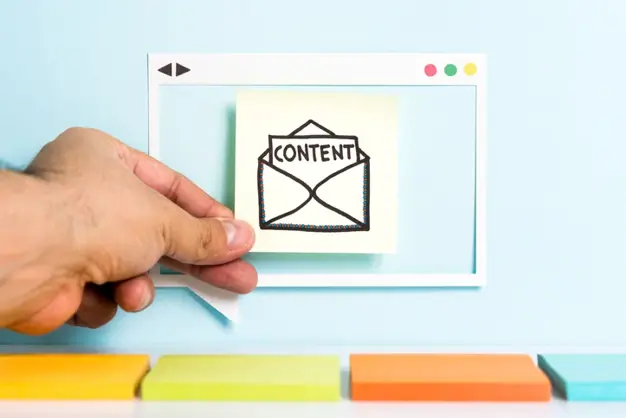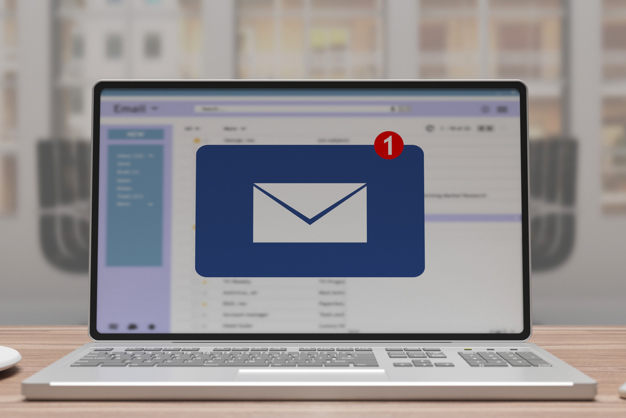While many marketers focus on flashy designs or complex automation sequences to ensure their email campaigns are successful, the fundamentals of strong email copywriting remain surprisingly consistent across industries and audiences. The best email copy feels like a one-on-one conversation with your reader, seamlessly guiding them from an attention-grabbing subject line through compelling content to an irresistible call-to-action.
Whether you're crafting a product launch, newsletter, or welcome sequence, understanding the core principles of effective email copy isn't just about writing well – it's about creating messages that respect your readers' time while delivering genuine value. Let's dive into proven strategies that can transform your emails from inbox clutter into compelling conversations that drive engagement and conversions.
Copy Tips for Every Part of Your Email
Subject Lines
You know how you scroll through your inbox every morning, quickly deciding which emails to open and which to trash? Well, that's exactly why subject lines are an essential component of email marketing. Just like a store needs an attractive sign and window display to get people through the door, your email needs a subject line that makes people think "I want to read this."
Most people are drowning in emails (we're talking about 120-plus per day), and nearly half of them decide to open an email based purely on that subject line. But it's not just about being catchy – your subject line needs to be honest about what's inside, or you'll quickly lose trust. How do you craft the perfect subject line? Here are our tips.
- Key Characteristics:
- Short, clear, and enticing.
- Sparks curiosity or highlights a benefit.
- Avoids spammy language.
- Best Practices:
- Use Actionable Language: Encourage the reader to take immediate action.
- Personalize: Incorporate the recipient’s name or reference something specific to them.
- Create Urgency: Use time-sensitive language to increase open rates.
- Copy Guidelines:
- Length: Keep subject lines to less than 50 characters for best results.
- Tone: Align with your brand voice while appealing to the recipient’s interests.
- Examples:
- "[Name], Your Weekend Plans Just Got Better!"
- "Why Wait? Your VIP Access Is Here."
- "Stuck on Dinner Ideas? We’ve Got You Covered."
Preheader Text
Preheader text is the often-overlooked companion to your subject line. While marketers tend to focus heavily on subject lines, preheader text provides crucial additional context that can significantly boost open rates. With email clients displaying between 35-140 characters of preview text, it's valuable space to expand your message and provide compelling reasons to open.
Crafting preheader text that complements your subject line allows you to create a powerful one-two punch that can significantly improve your email's chances of standing out in crowded inboxes. Here’s how you can make your preheaders more potent.
- Key Characteristics:
- Brief and informative.
- Expands on the subject line without repeating it.
- Best Practices:
- Add Value: Highlight what’s inside the email and why it matters.
- Be Specific: Mention offers, benefits, or intriguing details.
- Copy Guidelines:
- Length: Aim for 40-60 characters.
- Placement: Ensure the preheader text aligns with the email’s key message.
- Examples:
- "Don’t miss out on your 20% discount—shop now!"
- "Get step-by-step tips to boost your email strategy."
Body Content
After the subject line and preheader have done their job of getting the open, email body content is where your message truly comes to life. Think of it as the main act – while your subject line might get people through the door, your body content is what keeps them engaged and drives them to take action.
The most effective email bodies follow a clear hierarchy: they lead with a compelling hook, deliver on the promise made in the subject line, and guide readers toward a specific call to action. Breaking up content with scannable headers, short paragraphs, and strategic white space is crucial, as research shows most people scan emails in an F-pattern rather than reading every word.
Images and design elements should support your message rather than overshadow it, keeping in mind that many recipients may have images blocked by default. The real power of email body content lies in its ability to tell a story that resonates with your audience's needs while maintaining a consistent brand voice – whether that's professional, conversational, or somewhere in between.
- Key Characteristics:
- Clear and concise with a single focus.
- Includes compelling benefits and engaging language.
- Visually scannable with short paragraphs and bullet points.
- Best Practices:
- Start Strong: Open with a hook that grabs attention immediately.
- Focus on Benefits: Emphasize what’s in it for the reader.
- Include a Clear CTA: Direct the reader toward the next step with an unmistakable call-to-action.
- Copy Guidelines:
- Length: Keep the email between 50-125 words for most campaigns.
- Format: Use headers, bold text, and white space to enhance readability.
- Example:
- "Hey [Name],
Tired of struggling with email marketing? Join our expert-led webinar and discover the tools and strategies you need to drive real results. Reserve your spot before it fills up!
[Reserve My Spot]"
Download: How to Choose the Right Digital Marketing Agency
Need some help solving your digital marketing challenges? Find out how to determine which agency is the right partner for your business.
Calls-to-Action (CTAs)
Call-to-action (CTA) button text might seem like just a few simple words, but it's actually one of the most critical elements that determines whether your email drives real results. While your email content builds the case, your CTA button is the moment of truth – it's where interest transforms into action.
The most effective CTAs use clear, action-oriented language that creates a sense of value or urgency without being pushy. Think "Start Your Free Trial" rather than just "Click Here," or "Save Your Spot" instead of the generic "Submit." The key is being specific about what happens next – your button text should make it instantly clear what readers will get when they click.
- Key Characteristics:
- Clear, direct, and visually distinct.
- Action-oriented language that inspires clicks.
- Best Practices:
- Use Active Verbs: Phrases like “Shop Now” or “Get Started” work well.
- Keep It Simple: Focus on one primary CTA per email.
- Make It Stand Out: Use buttons or bold links to draw attention.
- Copy Guidelines:
- Length: 2-5 words for button text.
- Placement: Include the CTA above the fold and repeat it at the end if necessary.
- Examples:
- "Download Your Free Guide"
- "Start Your Free Trial Today"
Universal Principles for High-Performing Email Copy
While each element has its unique guidelines, there are some universal principles that apply to email copy:
- Personalization: Tailor the email to the recipient’s preferences and behaviors.
- Clarity: Avoid jargon and keep the message straightforward.
- Testing: A/B test subject lines, CTAs, and layouts to optimize performance.
- Mobile Optimization: Ensure the email is easy to read and interact with on mobile devices.
Advanced Tips for Optimizing Email Performance
- Segmentation: Divide your email list into smaller, targeted groups for more personalized messages.
- Automation: Use email automation tools to send timely and relevant content based on user actions.
- Analytics: Monitor open rates, click-through rates, and conversion metrics to continuously refine your strategy.
- Engagement Triggers: Incorporate dynamic content like countdown timers or personalized recommendations to boost interaction.
Start Crafting Better Emails Today
Effective email copy is a blend of creativity and strategy. By mastering subject lines, preheaders, body content, and CTAs, you can create emails that not only get opened but also drive meaningful results.
Ready to improve your email campaigns? Aztek can help. Whether you need creative subject lines or effective automations, we’ve got you covered. Let’s write emails your audience actually wants to read.









